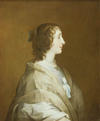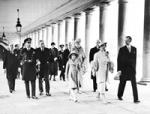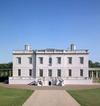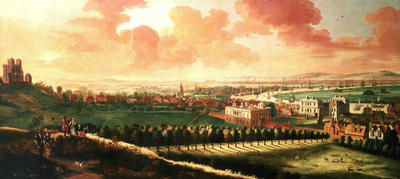National Maritime Museum, Greenwich. London
At Greenwich on the banks of the Thames River is housed the National Maritime Museum, also on this site in the Royal Park are, the Royal Observatory, the Queen's House, and the old Royal Naval College.
The Royal Observatory.
Charles 11 founded the Royal Observatory on the 22nd. of June 1675, to undertake work that would solve the problem of finding longitude accurately. The first Astronomer Royal was a 28 year old clergyman, John Flamsteed, his instructions:
"To apply himself with the most care and diligence to rectifying the tables of the motions of the heavens, and the places of the fixed stars, so as to find out the so much desired longitude of places for the perfecting the art of navigation."
At Greenwich at the Royal Observatory is the source of the Prime Meridan, Longitude 0 degrees 0 minutes 0 seconds. A brass strip at ground level marks it out, and I have stood astride this spot, my left foot in the West, and my right foot in the East.
 |
 |
 |
| Anne of Denmark, who commissioned the building of the Queen's House at Greenwich in 1616. |
Charles 1, gave Greenwich to Queen Henrietta Maria in 1629. |
Queen Henrietta Maria who completed the Queen's House at Greenwich in 1635. |
Adopting the Prime Meridan.
It was only in 1884 at the International Meridian Conference held at Washington DC. that 25 countries adopted the Meridan at Greenwich as the Prime Meridian of the world. It was agreed Longitude would be measured in two directions from this Prime Meridian, East being plus and West being minus. Heretofore, each country tended to keep their own Zero Meridian, which naturally led to much confusion.
Harrison's Clocks.
It is here at the Royal Observatory, that Harrison's famous clocks may be seen. They solved the problem of keeping exact time at sea, and allowed the navigator to accurately calculate Longitude.
The Queen's House.
Anne of Denmark, in 1616, commissioned Indigo Jones to design a new Pavilion for her at Greenwich. It was intended as a private retreat and a place to dispense hospitality. It was also to serve as a bridge over Greenwich to Woolwich Road between the Palace gardens and the Royal Park. In April 1616, work stopped when Anne became ill, and she died the next year.
The structure was thatched at first floor level and remained static, until James 1st's son Charles 1 gave Greenwich to his Queen, Henbrietta Maria ( she was the daughter of Henry IV of France ) in 1629. The house was completed by 1635.
Old Royal Naval College.
Also set in this Royal Park is the Old Royal Naval College founded in 1694, the once Naval University, but no longer functioning as such. Don't miss its Painted Hall, with its showing of the National Gallery of Naval Art.
 |
 |
 |
| Greenwich Time Ball erected in 1833. The ball was dropped daily at 1300 ( 1 PM ) and was used to check marine chronometers by sailors on the Thames. |
Nelson's uniform worn at Battle of Trafalgar. On display at National Mritime Museum Greenwich. |
Royal opening of The National Maritime Museum in 1937 by King George VI. |
National Maritime Museum.
The National Maritime Museum was established by an act of Parliament in 1934, and opened to the public by King George VI on the 27th. of April in 1937. Today, this museum has grown to be one of the great Maritime Museums of the world, and houses some 2.48 million items, it has the most important holdings world wide on the history of Britain at sea, including Maritime Art. 100 Gallery assistants tread the floors of the museum, waiting to welcome more than a million visitors who annually flock here to savour Britain's age old History of and reliance on the sea as a guardian of this small island.
 |
 |
 |
| The Royal Observatory Greenwich. |
National Maritime Museum, Greenwich. |
The Queen's House Greenwich. |
How to get to the National Maritime Museum.
There are two basic ways to arrive at the National Maritime Museum, by the newer Dockyards Light Railway, passing through the impressive Docklands development, but really for anyone who wishes to visit this wonderful Maritime display and other historical buildings on this site, I strongly recommend you should arrive at Greenwich by boat via the Thames River.
Join a boat close to Parliament House, in the shadow of Big Ben, enroute, bask in the history of London, see the Tower of London from the river as you cruise the Thames, past the WW2 cruiser HMS Belfast, until you reach Greenwich. Your boatman will give you a running commentary as you make your way slowly down this historic waterway, and then whip off his battered cap, to pass it round for recompence for just doing his job, for which you have already duly paid, but such is the way of the modern world today!
There is much to enjoy on your arrival, allow yourself plenty of time to visit this wonderful and historical area.

Greenwich and London from One Tree Hill










